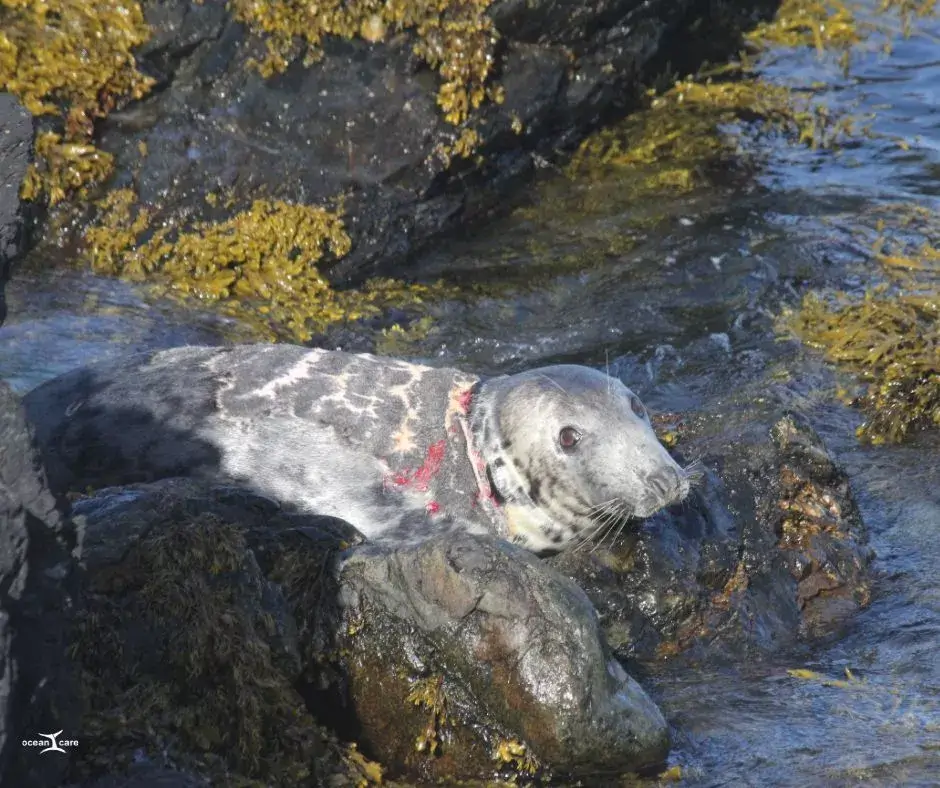Mark SimmondsDirector of Science
Worldwide entanglement rates are up to 7.9% of seals.
A seal in pain
On a recent visit to a seal colony in northwest Wales in the UK, OceanCare’s Director of Science, Mark Simmonds, spotted the animal in this photograph and we are sorry if this image causes anyone distress but we wanted her story to be known.
She was sitting a little apart from the other seals hauled out on that sunny June day and her attitude was also different. Most of the seals were sleeping, but some were awake, bright-eyed, alert, vocalising and socialising. However, her eyes were half closed and she looked uncomfortable. The photograph, taken with a powerful telephoto lens, shows that she has something embedded around her neck and the bright pink areas are granulation tissue formed as a response by her body to the constant irritation that this was causing. The fur on her back looks strange too and she may also have an associated infection causing this. This is a very sick animal and likely to be in constant pain. The embedded material may be a piece of fishing net or some other unbreakable loop of probably plastic material and she is likely to have became entangled with it when she was younger and as she has grown, so it has cut more and more into her neck.
Mark presents his personal view here: «There is little that is more distressing to me than encountering a seal, or any other marine mammal, with this kind of chronic embedded entanglement. It forms a wound that cannot heal and must cause awful pain whenever she moves. Unfortunately, worldwide entanglement rates are high, affecting up to 7.9 % of seals and their relatives, including seal lions and fur seals, and can be caused by a variety of plastic loops such a packing bands, rope and fishing-related materials.
Friends seeing this sad photograph immediately asked whether she could be rescued, and, in fact, an increasing number of seals are successfully caught, have the embedded material removed and then fully recover. There is a big international effort looking at how to improve such rescues now ongoing. However, they can only happen in particular circumstances and, in this case, getting close to this poor seal across the weed-strewn rocks would have been impossible, she would have simply slipped away into the sea. I only saw her once in the week that I was in this vicinity, and I can only hope that she will show up again somewhere suitable for a team of appropriately trained experts to restrain and treat her. What this shows again is that we must take great care not to allow entangling materials to enter the sea. What may be a careless act of littering can bring a life-time of pain and distress to marine animals».
OceanCare continues its efforts to strengthen rescue networks as well as to prevent further discarding of any kind of material that does not belong in the seas, including abandoned fishing gear and other plastics.
